Engendering Green Habits – NEA PR and App Campaign
- Sean Lee

- May 7, 2021
- 21 min read
Updated: Aug 15, 2021
1.0 Introduction
National Environmental Agency (NEA) is the leading public organisation responsible for improving and sustaining a clean and green environment in Singapore. They have been advocating for a lifestyle of “Reduce, Reuse and Recycle”, but in spite of their commendable efforts, there is still a severe lack of efforts to recycle on an individual and community level. This may be indicative of obstacles beyond just an unwillingness to recycle or a lack of recognition of the importance of recycling. As such our campaign hopes to both address these issues directly and bolster ongoing initiatives spearheaded by NEA.
There is a lot of potential for much more waste in Singapore to be recycled and reused as only 10% to 50% of common materials are currently being recycled (Zero Waste SG, 2015). This shows that Singapore currently does not have a culture of recycling.
However, the amount of waste generated by Singaporeans has increased exponentially and has adversely affected the efficiency and efficacy of waste management and disposal faculties (Zhang, Keat & Gersberg, 2010). Plastic waste accounts for 10% of all waste in Singapore (Barnes, Galgani, Thompson & Barlaz, 2009). Glass and metal combined take up more than 15% of solid waste locally (Zhang, Keat & Gersberg, 2010). This means that, potentially, 25% of waste in Singapore is not recycled and brought to landfills, burdening our waste management and disposal systems and creating long-term environmental issues.
In 2015, Singapore’s domestic recycling rate was 19%, as compared to other developed economies like UK and Taiwan where domestic recycling rates there are 44.2% and 42% in 2013, respectively. One of the key issues hindering recycling is the convenience of rubbish chutes in HDB flats where more than 80% of our population lives (Housing Development Board, 2015). Recycling is effortful and perceivably creates more trouble for households compared as opposed to just chucking everything down the chute (L. Lim, 2016). This highlights how Singaporeans are unmotivated to put in the perceived extra effort to recycle barring the fact that there is no incentive for them to do so (Van Birgelen, Semeijn & Keicher, 2009).
NEA is currently heading the National Recycling Programme which requires Public Waste Collectors to provide recycling bins and recycling collection services. This is in line with the aim of our project which is to encourage more Singaporeans to recycle through addressing the poor accessibility of recycling points. Thus, creating a strategic PR plan is crucial in order to communicate to the public the measures put in place to facilitate recycling, as so as to raise the recycling rates of Singaporeans.
Another proposed client organisation will be the supermarket chains in Singapore. Supermarket chains are currently giving out discounts when customers bring their own bottles, bags, and the like as part of ‘Bring Your Own’ campaign (Boh, 2017a).
Incon Green Singapore also has plans to install 500 ‘reverse vending machines’ across the island that reward people, monetarily, for recycling bottles and cans by dispensing physical cash according to the recyclables deposited (Boh, 2017b). These reverse vending machines will be integral improving access to avenues to recycling and in raising the rate of recycling in Singapore.
2.0 Public Relations Plan
2.1 Situation Analysis
Analysis of our surveys results and interviews confirm that many Singaporeans understand the necessity of recycling but are unmotivated to do so and some feel that poor access to recycling bins hinders their recycling efforts
2.2 Problem Statement
Singaporeans are unmotivated to recycle due to the perception that recycling requires extra effort, which is also not incentivised monetarily or socially.
2.3 Stakeholder Analysis
It is clear the general public feels strongly about environmentalism and its efforts, especially recycling, yet they do not feel they are appropriately incentivised or rewarded when they recycle.
Governmental agencies and non-profit organisations focused on environmentalism will be concerned with the lack of recycling as it reflects how nonchalant the public is about environmentalism.
Supermarkets can leverage on environmental initiatives to build positive corporate social responsibility around their brands since supermarkets are usually associated with wastage (Eriksson, 2012, p. 17).
The media is also a stakeholder as they play a critical role in shaping public opinion, and often provide news coverage on environmental issues.
2.4 Communication Goals and Objectives
Our main objective is to bridge the gap between values and actions by encouraging Singaporeans to recycle more.
Our goals can be split into mid-term and long-term goals.
Mid-term Goals
See an increase in percentage of domestic recycled material in Singapore by 20% in 6 months of campaign
Long-term Goals
Reach at least 25% of households in Singapore by end of the campaign
50,000 downloads of the app by end of campaign
10% increase in monthly use of ‘reverse vending machines’ by end of campaign
2.5 Media Strategy and Plan
2.5.1 Target Audience
Demographics
Singaporeans
25 to 55 years
Males and females
Lower to upper-middle income
Psychographics
Main grocery shopper of household
Makes most of the lifestyle decisions in the family
Likely to possess higher purchasing power
Familiar with environmental issues and recycling
Cares about how s/he is perceived by others
Owns a mobile device
Uses mobile device frequently
Consumes traditional and new media
Incentivised by monetary rewards
2.5.2 Message
The key message of this campaign is that recycling is a valuable and rewarding experience. This key message will be conveyed through our campaign titled “Recycling Rewards”. It aims to encourage more people to recycle by reinforcing what they already know – that recycling is important – and promoting what they should know – that recycling can be a rewarding experience, emotionally and monetarily, and in time cultivating a norm of recycling in Singaporean society.
2.5.3 Strategy
Our media strategy would leverage on a holistic approach, including the use of a mix of traditional and new media in order to reach out to Singaporeans aged 25 to 55 years old to convey the campaign's message and encourage recycling as a holistic media mix of traditional and new media is regarded as the most effective communication strategy in public relations (Taylor & Perry, 2005, p. 212).
3 in 4 Singaporeans use social media, thus it’ll be the most effective in terms of reach (Tan, 2017). Furthermore, according to our survey, almost all of our target audience uses social media[1], this means that it will be highly effective in terms of reach.
However, the reach of social media in the form of user-generated or shared content is largely uncontrolled and tends to lack credibility. These weaknesses are addressed by the use of traditional media in our campaign.
Despite the dip in Singaporeans’ use of traditional media[2], TV and newspaper are still essential to adult Singaporeans (Info-communications Media Development Authority, 2016; The Straits Times, 2016). Singapore newspapers still remain as the popular choice among Singaporeans for reliable news and information (Nie, Lin & Mei, 2013). Additionally, the daily circulation of local papers is also on the rise[3]. Traditional and out-of-home media still play a big part in moving social media. The out-of-home media (OOH) serves as a beacon for initiating digital conversations on recycling, integrating social media with OOH media through the use of hashtags on the posters itself (Hanney, 2016).
2.5.4 Tactics
In terms of social media, we will narrow down our efforts into 4 major social media sites: Facebook, Instagram, Twitter and Youtube.
Main platform to engage and educate our target audience as they use it most frequently[4]
Effective platform for online discussion and interactions (Omar, Embi & Yunus, 2012)
NEA can use existing Facebook page (which already has 84,000 followers)
Already amassed substantial following and established credibility
Despite being least used by our primary audience4, Twitter’s nature of being fast and instantaneous serves a unique purpose
Keeps individuals updated with latest campaign developments
Important in generating the media buzz for the campaign activation
NEA already disseminates information on their Twitter account (which has garnered more than 423,000 followers)
Established credibility as fast and legitimate source of information
Instagram is second to Facebook in terms of usage frequency within our target audience[5]
Main purpose is to build a positive brand image
Focuses on the value of the aesthetic (Hartmann, Sutcliffe, & De Angeli, 2007)
Could evoke emotional responses to the consequences of not recycling
Build rapport through soft-sell messaging that reinforces the main message
Allows for internalization of campaign message and build on audience’s intrinsic motivation to recycle
YouTube
Despite large user base, latent public would not be actively searching for videos on recycling if they lack the motivation to recycle in the first place
Employ the use of YouTube advertisements to reach out to our target audience
Pipe their curiosity and encourage them to visit the official Facebook page
For traditional media, we chose to focus on three channels – The Straits Times, Channel 5 and Channel News Asia[6] – after consulting statistics, and our survey and interview results. Singaporeans are generally satisfied with the quality of local newspapers and TV channels, and still see them as credible sources of information (Media Development Authority, 2011). Traditional media channels will mainly be used to broadcast our message to the masses. This also allows us to borrow the legitimacy and credibility of such media channels. Press releases[7] will be sent to traditional media channels to increase the likelihood of them reporting on our campaign and activities since they would have first-hand information and details.
To ensure a truly holistic approach, we will also be launching an app, using out-of-home media, giving away consumer media kits and orchestrating a campaign activation.
‘Recycling Rewards’ App[8]
For users to monitor how much they have recycled and earned to motivate them to recycle more
Provide nearby locations of recycling bins or ‘reverse vending machines’
Users can gain a sense of achievement after getting first-hand and up-to-date information about how much they have recycled
In-App Giveaways
Meeting a minimum amount of $2 a week would earn individuals one ‘chance’ for a weekly draw of $10 worth of shopping vouchers, and in a month the accumulated ‘chances’ would qualify individuals for a monthly draw of $50 worth of shopping vouchers
Out-of-home
Posters with minimalist designs, bright colours put up at supermarkets where reverse vending machines are located
Ensures that the message is clear yet eye-catching
Shoppers reminded that supermarket has reverse vending machines
Poster’s message reinforces the need to recycle, prime supermarket-goers to recycle
Campaign Activation
An exhibition aimed towards evoking an emotional response
Physical representation of waste collected from a selected HDB block
Recyclables and waste separated, encased in two separate polycarbonate rectangular exhibition cases
Brings weight to the campaign message
Allows for physical connection with how much recyclables are ‘wasted’
Leverages on shock factor in order to motivate individuals to step up and take ownership of recycling
Secondary functions:
Platform to distribute and educate the public on the use and function of:
Recycling-at-home kits
Reverse vending machines
General education on the importance of recycling
Key visuals in the short film chronicling the process of campaign creation enables individuals to connect emotionally and identify with the key messages of the campaign
‘Recycling-at-Home’ Kits
Small, portable recycling bins for plastic, cans and paper
Addresses lack of access to recycling bins
Increases convenience of recycling
Guidelines on recyclables would also be included on the bin itself
Can be cleared at large neighbourhood recycling bins or exchange recyclables for monetary rewards at reverse vending machines

(Example of such at home recycling bins. Photo from: http://themoorefarmhouse.com/awesome-ikea-kitchen-trash-can/)
2.6 Evaluative Research Plan
We will employ a range of evaluative methods to ensure campaign tactics are evaluated accurately in the right contexts.
Social Media Activities Evaluation
Evaluate reach of social media posts through analytics software (like Socialbakers, Facebook Business Manager and Twitter Analytics)
Combine statistics (impressions and engagement) of all platforms to calculate reach and engagement of campaign
Traditional Media Evaluation
Identify number of media outlets who published/ broadcasted stories of campaign
Evaluate if the tone and angle of stories run are positive or negative
Combine statistics of readership and viewership to calculate reach of campaign
Recycling App Evaluation
Identify total number of downloads from App Store and Google Play Store
Evaluate whether 50,000 downloads were achieved
Recycling statistics from the app can track campaign effectiveness
Recycling-at-Home Kits Evaluation
Identify average monthly use of ‘reverse vending machines’ during campaign and compare average monthly use before and after campaign to evaluate whether 10% increase in use was achieved
Identify percentage of waste recycled at end of campaign and compare to 2016’s 21% to evaluate whether 20% increase in percentage was achieved
Campaign Exhibition Activation Evaluation
Monitor social media activity around campaign activation e.g. views of campaign video, social media buzz about campaign
Combine statistics of reach and views to calculate reach of campaign
Overall Campaign Evaluation
Send out post-campaign survey to Singaporeans who fit our primary target audience, who were not previously interviewed or surveyed, to seek their opinion if there was an improvement o the ease of recycling in Singapore to evaluate if there was a change in their opinions on recycling
3.0 User Interface and Interaction Design Plan
Our mobile app, ‘Recycling Rewards’, will be launched on both Android and iOS. It will include 7 key tabs: Recycle, Recycling Tips, Statistics, Check Balance, Newsroom, and FAQ & Feedback. The app will be the main channel where we host giveaways.
3.1 Target Users and Behaviour
Our target users are tech-savvy and responsive to monetary incentives of the ‘Recycling Rewards’ application, resulting in an increase the frequency of their recycling habits.
3.2 Desired User Experience
‘Recycling Rewards’ will improve the ease of target users’ recycling efforts by providing information on where and how much they can earn by recycling. With recycling activities streamlined by the app, target users will recycle more due to increase ease of recycling and monetary incentives.
3.3 Usage Scenario
Sample Persona: Joyce, 32 years old
Mother of a young son
Works full-time in the Central Business District
Lives in the heartlands
Visits her neighbourhood supermarket roughly twice a month
Goals and Motivations
Wants to do her part to save the earth
Seeks convenience
Interested in saving money or making money any way she can
Joyce is a working mum who enjoys convenience due to her busy schedule. She visits her neighbourhood supermarket roughly twice a month to do her family’s grocery shopping. Being money-smart, she looks out for ways to save money or earn rewards. Occasionally, when she comes across a recycle bin in public, her awareness of the importance of recycling prompts her to recycle any recyclables on hand.
With the ‘Recycling Rewards’ app she learns how to locate the nearest recycle bins to her and track of all her recycling activities. When exploring the app, she stumbles upon additional useful information of recycling, reusing and reducing which she adopts into her daily routine.

3.3.1 Functional Requirements
Interact with the reverse vending machines seamlessly
Update the amount of monetary incentives users have earned
Provide locations of the machines instantaneously
Feed users with additional content related to recycling
3.4 Attitudinal and Behavioral Goals
3.4.1 Decrease perception that recycling is inconvenient
By streamlining all the information on recycling and how users can recycle, the app helps make recycling an easier process since users know what they can and should recycle, where to recycle and what they stand to gain by recycling. Most importantly, the app addresses the issue of the lack of access to avenues of recycling since it provides users with locations of the nearest recycling bin or reverse vending machine.
3.4.2 Increase willingness to recycle
Those surveyed cited that the main obstacles to recycling were that it was inconvenient and effortful, hence our campaign and app aim to address these obstacles directly and amplify individual's willingness to recycle through monetary incentives.
3.4.3 Encourage regular use of ‘Recycling Rewards’
“Habits are behaviours done with no conscious thought” (Eyal, N & Hoover, R., 2014) was a principle that guided our process of app design. Ultimately, the greater purpose which the campaign serves is not the creation of a shift in mindsets but a change in the actions that accompany them, hence we designed our mobile app in accordance to the framework of the ‘The Hook’.

(Refer to point 4.6 for additional information.)
3.5 Prototype
App Screens Mockups in order:
Log-in Page, Main Menu, Recycle Page, Recycling Tips, Statistics/Achievement, Check Balance, Newsroom, FAQ & Feedback
Log-in Page
Minimalistic design allows for clear user flow. Apparent affordances tell users what to do when they open the app for the first time. There are only two blanks for users to input their email and password. This constrains users to only two areas where they can input information.
Main Menu
After logging in, the user will be directed to our main menu. Employing a minimalistic design ensures that the app’s affordances are clear and visible.
Feedback is given when the user taps on any menu items to inform the user that the app has received the user’s selection, in the form of highlighting selections and haptic feedback.
Recycle Page
When users select ‘Recycle’, they will be led to a page where a Google Map view of their vicinity will be shown with pins on the nearest reverse vending machines and recycle bins.
They will also be automatically routed to the nearest reverse vending machine or bin.
Should users want to navigate out of the map, they can swipe right to bring out a cropped view of the main menu to navigate to the other tabs since swiping to the right is familiar feature in many other popular mobile apps. The menu will swipe out seamlessly, providing instant feedback and mapping between the swiping action and the menu that appears.
Recycling Tips
In the ‘Recycling Tips’ tab, users can find tips that help them in their recycling, reusing and reducing journey.
Users can call up the cropped main menu here by tapping the menu icon on the top left of the screen. This tab will have a sleek and minimalist aesthetic allowing for easier reading. Users can also pinch the text open and close to increase and decrease the font size, respectively.
Users can navigate back to the list of tips by swiping to the right.
Statistics/Achievement
In the ‘Statistics’ tab, users can see how much waste Singaporeans have recycled. This will foster a sense of community since they can see how their contributions have played a part in the nation’s recycling efforts. This also acts as a goal for users as the visual design encourage them to try to fill up the entire globe with colour.
Check Balance
Users can see much they’ve earned from reverse vending machines through the ‘Check Balance’ tab. When at a reverse vending machine, tapping the ‘plus’ button will connect users to the machine via Bluetooth. After recycling, the amount of money earned will be automatically updated.
Users can also check how much each recyclable item is by tapping on its corresponding colour bar around the circle.
Newsroom
The ‘Newsroom’ tab will house all of NEA’s press releases and news articles regarding recycling. Artificial Intelligence (AI) will be employed here to filter news articles pertaining to Singapore, or Asia in general, that have a positive sentiment on recycling.
FAQ & Feedback
The ‘FAQ & Feedback’ will include a tutorial on how to use the app and other questions users might have. A direct email is also provided for users to ask any questions and provide feedback about the app or the campaign.
4.0 Discussion and Reflection
In our campaign design, we emphasised that the campaign’s aim is to bridge the gap between values and actions. Undoubtedly, recycling is a prosocial practice and our campaign seeks to translate this belief into action. Our campaign utilizes emotional messages to internalize the rewarding nature of recycling in audiences, through both the central and peripheral routes of persuasion. Additionally, we analyzed how the characteristics and uses of each popular social media site differ from each other for us to tailor content to each platform. In mobile app prototyping, we designed our app according to the principles of interactive media design, with emphasis on creating a ‘habit forming product’, through the use of variable rewards and investment.
4.1 Central and peripheral route of persuasion
The elaboration likelihood model (ELM) of persuasion is a theory describing how a change in attitudes is brought about. In our campaign, the peripheral route of persuasion takes the form of posts on social media by both NEA’s official account, out-of-home media in the form of posters and the eventual advertisements of the short film featuring the campaign activation. All these are aimed at making the latent public aware of the severity of environmental issues, specifically the consequences of not recycling. With the holistic approach where we constantly send out our campaign messages on different mediums, we increasing awareness would convert a passive public into an active public. The now active public would frequently find information on their feed once they “follow” or “like” the official NEA social media pages, hence following the central route of persuasion when considering the consequences of their actions, leading to the greatest and most permanent change in attitudes.
4.2 Nature of social media channels
In creating content on each social media channel, we were guided by the principle of “the medium is the message” (McLuhan & Fiore, 1967). For instance, although YouTube is found to be an extremely popular site among those surveyed, it tends to follow the uses and gratification theory where individuals go onto YouTube do so to find content to meet their needs . However, buying ads on YouTube is regarded as an effective way to make use of the platform (Dehghani et. al., 2016). Other social media sites have very different characteristics. For example, Twitter is favoured as a platform for individuals to receive fast, compact and up-to-date information and Instagram is a platform that focuses on the value of visual aesthetics. We determined Facebook to be the most suitable platform to base our online campaign activities on due to its popularity with the surveyed populace. Additionally, Facebook has the potential to help the campaign achieve higher reach, higher engagement rate, a sense of community among users with similar interests, and higher level of synergy with our campaign's message (Sabate et. al., 2014). Leveraging on the strengths of each social media channel, we tailor our content to suit varying channel characteristics, allowing for the most effective delivery of information.
4.3 Emotional message appeal
Due to the nature of the issue our campaign addresses, we decided that an emotional message style would suit our campaign's objective to effectively change our audience's actions. Emotional messages are successful at provoking involvement and desired reactions through reference to positive (or negative) emotions (Drossos et. al., 2007). As opposed to the frequent use of guilt appeal employed by other campaigns of a similar nature that often leads to audiences avoiding the message entirely (Hibbert et. al., 2007).
4.4 Kelman’s Source Attributes – Familiarity
The short film based on the campaign drives home the message that recycling is a personal responsibility, however a change in an individual’s way of life can only be enforced by their communities adopting the habit of recycling . The short film associates our campaign with positive aspects of identification with a cause ‘bigger than ourselves’ that would move a community to exert pressure on individuals to incorporate recycling into their daily routine. Using a familiar context , such as waste collected originating from a Housing Development Board (HDB) flat, where majority of our audiences live in, additionally displayed emotions of shock of people similar to them aids in identification of the campaign message.
4.5 Principles of Interactive Media Design
Using what we have learnt from interactive media design, we ensured that our app interface is intuitive and reduces confusion for users. Additionally, different shades of green encourage users’ association with the positive ideal new growth and a clean, green and healthy Earth.
4.5.1 Mapping
In designing the interface of our app, we ensured that users can navigate through the app seamlessly. This is achieved by following an app layout similar to popular and widely used mobile apps, such as bike-borrowing apps or restaurant recommendation apps. We also included common gesture functions, like swiping right to go back to the previous page into the app, similar to what users would usually use on apps such as Instagram and Facebook. Combined with a clean and uncluttered design, the app allows clear identification of its different features, providing a minimal learning curve for new users and fuss-free experience.
4.5.2 Feedback
In keeping true to the user-centric design, feedback is key in matching a user’s mental model to the designer’s conceptual model. For instance, selections in the menu being highlighted in white with black text once selected and haptic feedback on successful selection. Given relatively simple nature of the app, the interface will be optimized to be fast and smooth for a more pleasant user experience. Instantaneous feedback is important in gratifying and informing users of a successfully completed action.
4.5.3 Transference
We made use of transfer theory in many parts of our mobile app by using icons and functions that people are generally familiar with. For instance, it is reasonable to assume the general public is familiar with popular apps such as Google Maps, Instagram, and Facebook. Thus, we employed the use of Google Maps location and navigation services. We also used designed pins and a routing system similar to what is used in Obike/ Mobike. In terms of gesture functions, we used a similar system featured on Facebook and Instagram where users can swipe right to return to the previous page. We also used familiar icons such as the hamburger icon for ‘Menu’, the inverted-drop-shaped icon to represent the user’s current location, and the video play icon to prompt users that the video is playable. By ‘transferring’ many familiar concepts into our app, users will habitually and instinctively know what to do with minimal confusion.
4.6 Building habit forming products
Given that our campaign's goal is to integrate the practice of recycling in our audience's daily lives, habit forming could start with the mobile app. Borrowing concepts from Hooked: How to form Habit forming products (Eyal, N & Hoover, R., 2014 ), we kept the principles of a variable reward and investment in mind for app design, leaving the fulfilment of triggers and action to other means in our campaign. The monthly and weekly lucky draws for additional monetary incentive act as variable rewards that would motivate individuals to invest more time and effort in recycling, and this personal investment backed with a communal sense of ownership and accomplishment achieved by being able to view the nationwide statistics on recycling would aid in incorporating use of this app into the lifestyles of our target audiences.
4.7 Lessons learnt
4.7.1 Prototyping
By putting ourselves in the shoes of users and visualizing how we would use the app and its possible shortcomings, we discovered additional functions that can be incorporated in the app. This ensures that our method of designing was user-centric and more user-friendly. For example, in the process of prototyping, we discovered that we lacked the option to ‘Sign up for a new account’, and subsequently included it in.
To better understand how users use our app, we decided to test our interface on selected individuals who fall within our target audience using a paper prototype as it is a widely used method in user-centred design process. Through user observations, interviews and self-report questionnaires after, such evaluation aids us in understanding users’ behaviour and the degree of intuitiveness of app measured by observation of user’s initial contact with the app. This will also help us come up with ways to improve on the app interface for a more user-friendly experience.
4.7.2 Interviewing skills
During the process of conducting our interviews, we realised that selecting an interviewee that you are too familiar with might adversely affect the result of the interview as they tend not to elaborate fully on ideas and views they hold due to frequent interaction between the interviewer and interviewee previously. Thus, despite having well-prepared and well thought out questions, answers from your interviewee might be lacking as they would assume that you already know their answers and are reluctant to elaborate or repeat themselves. However, we found that interviewing our target audience on their opinions on our campaign was fruitful as they were able to glean insight into areas we did initially consider, further improving the design of our campaign.
Appendix
Justification for Traditional Media Channels
The Straits Times
Reach of 1.23 million, which is about 29% of the Singaporean population aged 15 years old and above (A. Lim, 2016)
Demographics of most Straits Times users in line with the demographics of our primary target audience (A. Lim, 2016)
Channel 5
Channel 5 will be effective in helping achieve significant reach since it has the potential to receive more than 3 million views daily, which is almost 60% of the Singaporean population (Media Development Authority, 2016)
Channel News Asia
Channel News Asia’s viewership demographic and psychographic similar to our primary target audience (Media Development Authority, 2016)
- Has the potential to reach more than 2 million viewers (Media Development Authority, 2016)
Singaporeans’ most popular choice of news among all media[9]
Figure 1: Respondents’ Usage Frequency of Different Media Channels in a Week
Results obtained from survey
Figure 2: Singaporeans’ Use of Traditional Media Over the Years
Obtained from Yearbook of Statistics Singapore (2017)
Figure 3: Daily Circulation of The Straits Times Through the Years
Obtained from Mapping Digital Media: Singapore (Nie, Lin & Mei, 2013)
Figure 4: Singaporeans’ Popular Choice of News Source
Obtained from Mapping Digital Media: Singapore (Nie, Lin & Mei, 2013)
Figure 5: Percentage of Respondents who Use the Various Social Media Platform in a Week
Obtained from survey results
Reference List
Ariely, D., Bracha, A., & Meier, S. (2009). Doing good or doing well? Image motivation and monetary incentives in behaving prosocially. The American economic review, 99(1), 544-555.
Barnes, D. K., Galgani, F., Thompson, R. C., & Barlaz, M. (2009). Accumulation and fragmentation of plastic debris in global environments. Philosophical Transactions of the Royal Society of London B: Biological Sciences, 364(1526), 1985-1998.
Boh, S. (2017a, August 31). Discounts and free food for bringing your own bag, bottle or containers at 14 retailers. The Straits Times. Retrieved November 15, 2017, from http://www.straitstimes.com/singapore/discounts-and-free-food-for-bringing-your-own-bag-bottle-or-containers-at-14-retailers
Boh, S. (2017b, September 26). Vending machine eats cans and bottles. The Straits Times. Retrieved November 14, 2017, from http://www.straitstimes.com/singapore/vending-machine-eats-cans-and-bottles
Dehghani, M., Niaki, M. K., Ramezani, I., & Sali, R. (2016). Evaluating the influence of YouTube advertising for attraction of young customers. Computers in Human Behavior, 59, 165-172.
Drossos, D., Giaglis, G. M., Lekakos, G., Kokkinaki, F., & Stavraki, M. G. (2007). Determinants of effective SMS advertising: An experimental study. Journal of Interactive advertising, 7(2), 16-27.
Eriksson, M. (2012). Retail food wastage (Vol. 45).
Info-communications Media Development Authority. (2016). Fact Sheet - Key Takeaways from Three MDA Surveys on Media Consumption. Singapore: Info-communications Media Development Authority. Retrieved 12 September 2017, from https://www.imda.gov.sg/about/newsroom/archived/mda/media-releases/2016/fact-sheet--key-takeaways-from-three-mda-surveys-on-media-consumption
Hartmann, J., Sutcliffe, A., & De Angeli, A. (2007, April). Investigating attractiveness in web user interfaces. In Proceedings of the SIGCHI conference on Human factors in computing systems (pp. 387-396). ACM.
Hibbert, S., Smith, A., Davies, A., & Ireland, F. (2007). Guilt appeals: Persuasion knowledge and charitable giving. Psychology & Marketing, 24(8), 723-742.
Housing Development Board. (2015). Public Housing – A Singapore Icon. Retrieved from http://www.hdb.gov.sg/cs/infoweb/about-us/our-role/public-housing--a-singapore-icon
Lim, A. (2016). The Straits Times is most read daily paper: Nielsen report. The Straits Times. Retrieved November 14, 2017, from http://www.straitstimes.com/singapore/the-straits-times-is-most-read-daily-paper-nielsen-report
Lim, L. (2016, June 27). Why is Singapore's household recycling rate stagnant? Channel NewsAsia. Retrieved November 15, 2017, from http://www.channelnewsasia.com/news/singapore/why-is-singapore-s-household-recycling-rate-stagnant-7980106
Nie, L. J., Lin, T., & Mei, L. M. (2013). Mapping Digital Media: Singapore. London: Open Society Foundations. Retrieved November 14, 2017, from https://www.opensocietyfoundations.org/sites/default/files/mapping-digital-media-singapore-20131017_0.pdf
Eyal, N & Hoover, R. (2014). Hooked: How to build habit-forming products. Penguin.
McLuhan, M., & Fiore, Q. (1967). The medium is the message. New York, 123, 126-128.
Media Development Authority. (2011). MDA Media Consumer Experience Study. Retrieved November 14, 2017, from https://www.imda.gov.sg/-/media/imda/files/industry-development/fact-and-figures/media-consumer-experience-study.pdf?la=en
Media Development Authority. (2016). Annual Report 2015/16. Retrieved November 14, 2017, from https://www.imda.gov.sg/-/media/imda/files/about/mda-ar-2016/annex.html
Miculan, M., & Urban, C. (2011, January). Formal analysis of Facebook Connect single sign-on authentication protocol. In SOFSEM (Vol. 11, pp. 22-28).
Omar, H., Embi, M. A., & Yunus, M. M. (2012). ESL learners' interaction in an online discussion via Facebook. Asian Social Science, 8(11), 67.
Sabate, F., Berbegal-Mirabent, J., Cañabate, A., & Lebherz, P. R. (2014). Factors influencing popularity of branded content in Facebook fan pages. European Management Journal, 32(6), 1001-1011.
Sarah Hanney. (2017, May). How to Integrate Digital Marketing with Out-of-Home
Media. The Fourth Source, Retrieved November 15, 2017, from http://www.fourthsource.com/tech/integrate-digital-marketing-home-media-21919
Saphores, J. D. M., & Nixon, H. (2014). How effective are current household recycling policies? Results from a national survey of US households. Resources, Conservation and Recycling, 92, 1-10.
Tan, A. (2017). 7 in 10 Singaporeans use social media on mobile, double global average: survey. The Business Times. Retrieved 12 September 2017, from http://www.businesstimes.com.sg/consumer/7-in-10-singaporeans-use-social-media-on-mobile-double-global-average-survey
Taylor, M., & Perry, D. C. (2005). Diffusion of traditional and new media tactics in crisis communication. Public Relations Review, 31(2), 209-217.
The Straits Times. (2016). The Straits Times remains the most-read English paper in Singapore: Nielsen survey. Retrieved from http://www.straitstimes.com/singapore/the-straits-times-remains-the-most-read-english-paper-in-singapore-nielsen-survey
Van Birgelen, M., Semeijn, J., & Keicher, M. (2009). Packaging and proenvironmental consumption behavior: Investigating purchase and disposal decisions for beverages. Environment and Behavior, 41(1), 125-146.
Yearbook of Statistics Singapore, 2017. (2017). InfoComm and Media. Retrieved November 14, 2017, from http://www.singstat.gov.sg/publications/publications-and-papers/reference/yoscontents
Zhang, D., Keat, T. S., & Gersberg, R. M. (2010). A comparison of municipal solid waste management in Berlin and Singapore. Waste Management, 30(5), 921-933.
Zero Waste SG. (2015). Singapore Waste Statistics from 2003 to 2014. Retrieved November 14, 2017, from http://www.zerowastesg.com/2015/03/20/singapore-waste-statistics-from-2003-to-2014/
Zhang, D., Keat, T. S., & Gersberg, R. M. (2010). A comparison of municipal solid waste management in Berlin and Singapore. Waste Management, 30(5), 921-933.
Footnotes
[1] Refer to Figure 1 in Appendix [2] Refer to Figure 2 in Appendix [3] Refer to Figure 3 in Appendix [4] Refer to Figure 5 in Appendix [5] Refer to Figure 5 in Appendix [6] Refer to Table 1 in Appendix for justification on why we chose these channels [7] Press releases will contain information on how to collect a Recycling-at-Home kit, details about campaign (including locations of ‘reverse vending machines’, release of recycling app, etc), and mention activation date, location but no information on specifics. [8] See ‘User Interface and Interaction’ for more information on mobile app [9] Refer to Figure 4 in Appendix

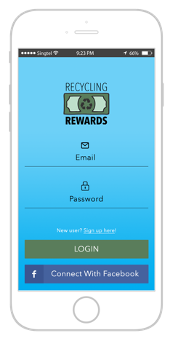

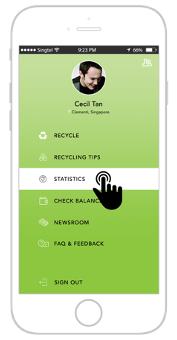

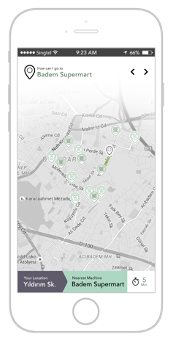



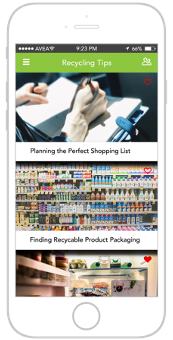

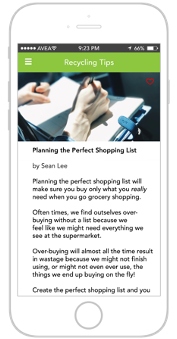

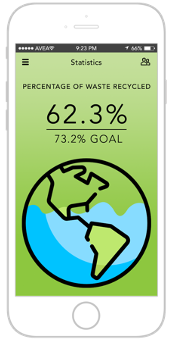



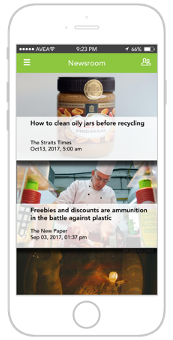

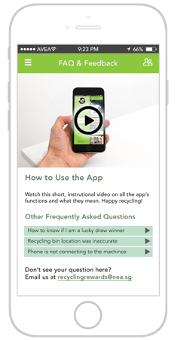

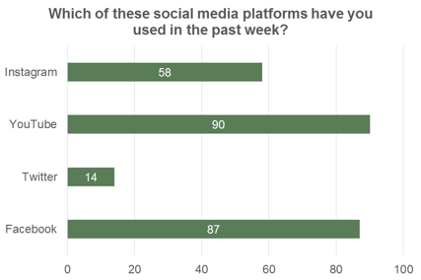

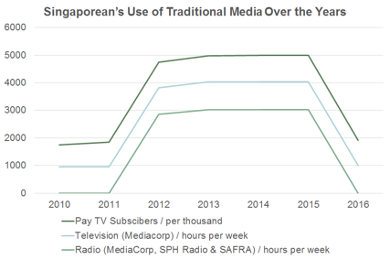

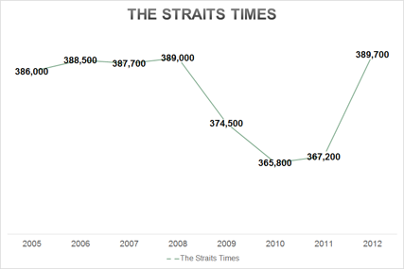

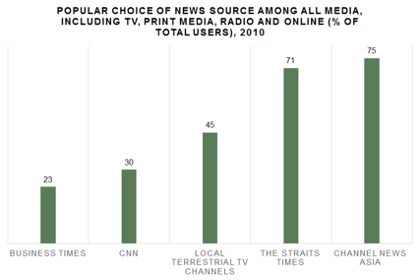





Comments